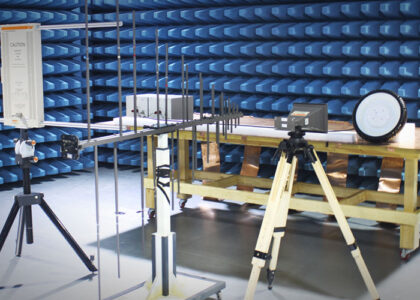Obesity is the primary factor driving demand for stomach space-occupying gadgets. Obesity is a global public health problem. Over the forecast period, the obesity pandemic is predicted to worsen, driving up demand for Gastric Space-Occupying Devices Market.
Overweight or obesity kills around 2.8 million adults each year, according to the WHO. Obesity and overweight are also associated with 23% of heart disease, 44% of diabetic cases, and 7% to 41% of certain cancer cases.
Furthermore, by 2030, one in every seven males and one in every five females globally will be obese, according to the World Obesity Federation and World Obesity Atlas (2022). The market product innovation is being driven by the need for novel, minimally invasive treatments with a higher margin of safety and efficacy for conditioning weight loss.
The global Gastric Space-Occupying Devices market is anticipated to be worth around US$ 224.6 million in 2022, according to Future Market Insights’ most recent industry report. Sales are predicted to expand at a CAGR of 13.7% over the forecast period, with the market reaching US$ 810.8 million in 2032.
Get Full PDF Sample Copy of Latest Report@ https://www.futuremarketinsights.com/reports/sample/rep-gb-15189
Rising disposable income in emerging nations, as well as greater government efforts to promote awareness among obese populations, are likely to boost sales. Total healthcare spending would rise from US$ 861 billion to US$ 957 billion by 2030, according to the American Heart Association.
Because of the high expense of healthcare, several governments have taken initiatives to reduce obesity and its associated comorbidities. In 2017, the Centres for Disease Control and Prevention (CDC) gave US$ 8.5 million to 50 states and the District of Columbia to improve ways for reducing obesity rates in the region with a high-obesity population.
“High preference for minimally invasive surgeries, along with increasing awareness regarding obesity-related disorders among youth is expected to fuel demand for Gastric Space-Occupying Devices over the forecast period,” says an FMI analyst.
Key Takeaways:
- Gastric balloon sales are expected to increase at a 13.6% CAGR during the assessment period.
- Hospitals lead the global Gastric Space-Occupying Devices market by end user, with demand expected to expand at a 10.9% CAGR through 2032.
- In 2021, the United States accounted for 83.3% of the North American Gastric Space-Occupying Devices market.
- Gastric space-occupying device sales in China are expected to grow at a 14.4% CAGR through 2032.
- The United Kingdom will emerge as an appealing market, with demand increasing at a 12.5% CAGR during the forecast period.
- Because of the region’s high prevalence of obesity, North America is regarded the leading region, with a market share of 34.3% in 2021.
For any queries linked with the report, ask an analyst@ https://www.futuremarketinsights.com/ask-question/rep-gb-15189
Competition Landscape
Leading players in the Gastric Space-Occupying Devices market are adopting various strategies such as product launches, mergers & acquisitions, partnerships, and agreements to strengthen their market presence as well as to expand their existing product portfolio. For instance:
- In August 2020, Obalon signed consulting agreement as part of a strategy to seek coverage and reimbursement for the Obalon balloon system.
Key Players
- Apollo Endosurgery, Inc.
- Obalon Therapeutics, Inc.
- Allurion Technologies, Inc.
- Helioscopie
- Endalis
- MEDSIL
- ReShape Medical, Inc.
- Lexel Medical
- Scientific Intake
What Does the Report Cover?
Future Market Insights offers a unique perspective and actionable insights on the Gastric Space-Occupying Devices market in its latest study, presenting a historical demand assessment of 2017 to 2021 and projections for 2022 to 2032.
The research study is based on the product – (gastric balloons and oral palatal space-occupying devices), by end-users (hospitals, speciality clinics, and ambulatory surgical centres), across seven key regions of the world.
For in-depth competitive analysis, Buy Now@ https://www.futuremarketinsights.com/checkout/15189
Key Market Segments Covered In Gastric Space-Occupying Devices Industry Research
By Product:
- Gastric Balloons
- Oral Palatal Space Occupying Devices
By End-User:
- Hospitals
- Speciality Clinics
- Ambulatory Surgical Centers
About Future Market Insights, Inc.
Future Market Insights, Inc. (ESOMAR certified, Stevie Award – recipient market research organization and a member of Greater New York Chamber of Commerce) provides in-depth insights into governing factors elevating the demand in the market. It discloses opportunities that will favor the market growth in various segments on the basis of Source, Application, Sales Channel and End Use over the next 10-years.
Contact:
Future Market Insights, Inc.
Christiana Corporate, 200 Continental Drive,
Suite 401, Newark, Delaware – 19713, USA
T: +1-845-579-5705
For Sales Enquiries: sales@futuremarketinsights.com
Browse All Reports: https://www.futuremarketinsights.com/reports
LinkedIn | Twitter | Blogs


